The Exchange Bar
Nong Studio utilized patterns throughout the floors and walls with moody lighting to draw guests into the The Exchange Bar.
There is a memory called the Bund, and a style called Old Shanghai.
The Blackstone Apartment is in the former French Concession. It marks the modern architectural classics of Shanghai with an eclectic style. It was known as the “most luxurious apartment” in Shanghai at that time for its luxurious configuration, and was sought after as the most popular social place for its famous and distinguished residents.
The BLACKSTONE EXCHANGE draws its design language from traces of 1930s Shanghai, a city and era that was flashy and gorgeous, lazy and mysterious, unique and unusual, introverted and self-sustaining. Minimally accepting of the infiltration of western culture, but stubbornly adhering to national traditions.
The entrance of the bar is set on the side of the building, with a long walkway paved with mosaic tiles that seem to fade away from the hustle and bustle of the flashy surrounding world. The bar owner seemed to only covet the company of friends, thus establishing a mechanism outside the door. After finding the passkey, the door slowly opens.
After entering the bar via the long walkway, the wide-open symmetrical space suddenly enlightens people. The top arc shape coincides with the iconic curved balcony on the facade of the Blackstone Apartment. The wall behind the wooden bar is decorated with various baroque stigmas. Under the background of the mottled red bricks, a sense of chaos in time and space is created, conjuring up a sense of being in an Italian-style family tavern. The atmosphere is both mysterious and historical.
The focal point of the entire space is the golden turntable, forming the centre of the stage on the central axis. The shape coincides with the turntable of the bank vault, illuminating the “exchange” derived from its name. However, there are only bottles of whiskey on the axis, and like a whirlpool, people can’t help but sink. What is even more unexpected are the double-sided sights of this golden turntable which, from the stage, cannot be crossed. However, from the bathroom on the other side, each corner of the hall can be seen through the turntable. It is secret and exciting.
Two boxes behind the bar on the side of the lobby are extracted from banks. One is from the western vault, and the other from the Chinese account room. The aisle becomes a long corridor of the “vault”, where stainless steel compartments store the wines of patrons. The wall of the “account room” is decorated with abacuses. The abacus beads form a sense of cloudiness through the light and shadow area, infusing a few additional mysteries to the atmosphere of the box.
The name “exchange” and the origins of the bar are prominently displayed, including through old newspaper articles posted at the entrance to the dining table covered with coins, as well as the vault shape of the stage to the two private boxes of the vault and the account room. This mysterious reservedness beyond the extravagant seems to transport you to the heyday of 1930s Shanghai. While nearly a century has passed, and Shanghai has changed dramatically, this space makes it seem like nothing has changed.
Design: Nong Studio
Photography: Chasing Wang

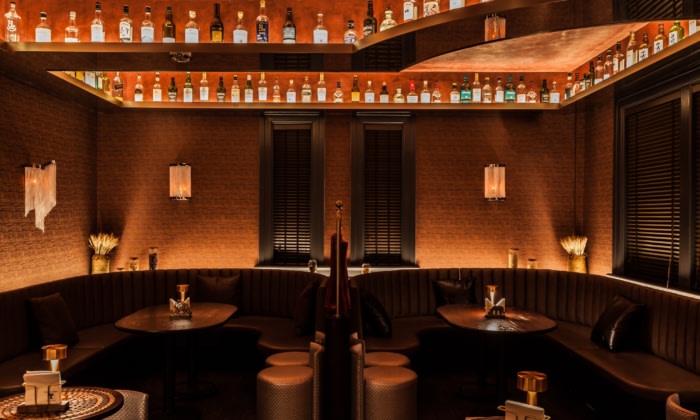
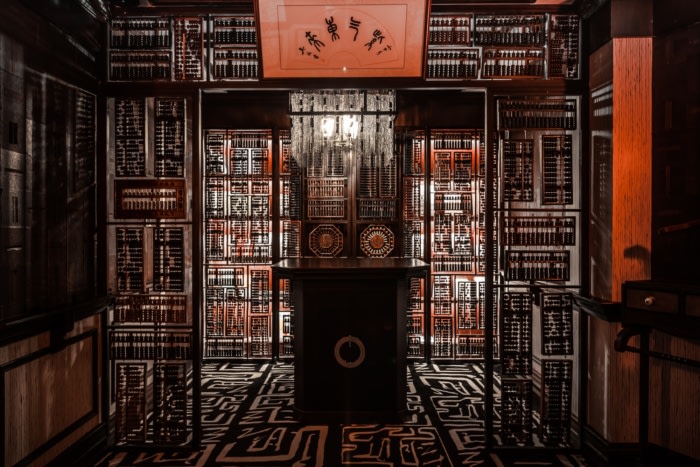
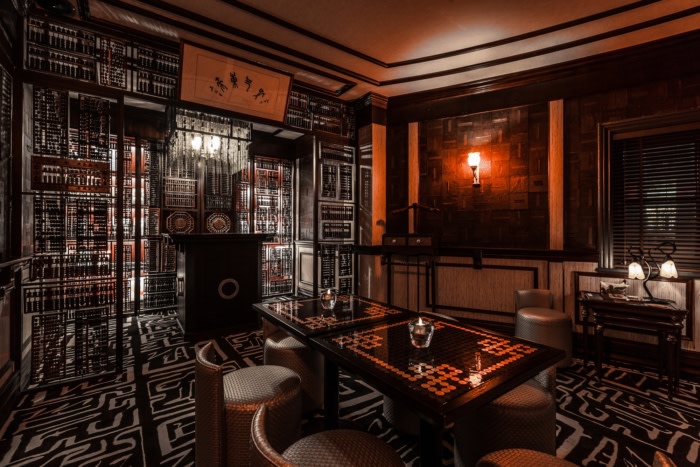
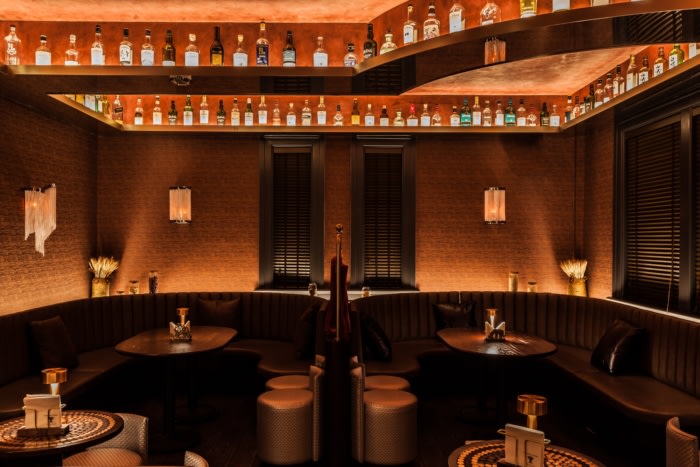
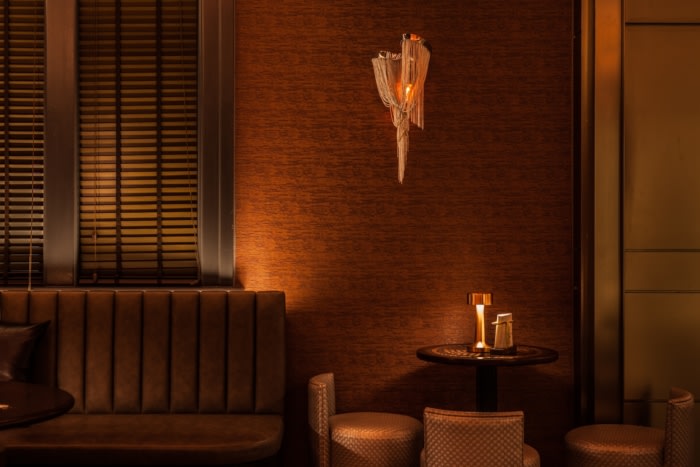
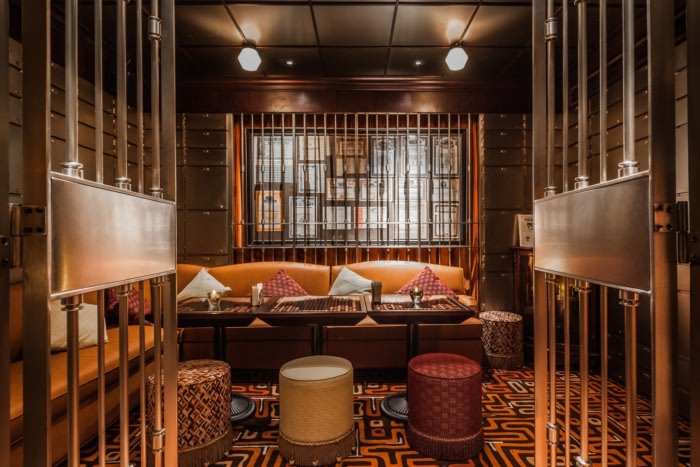
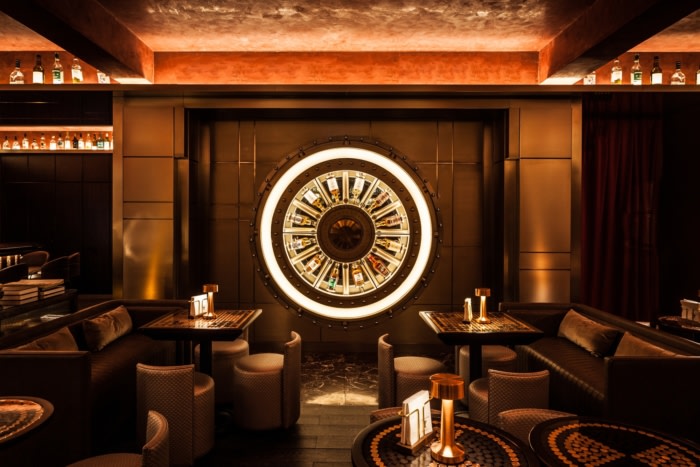
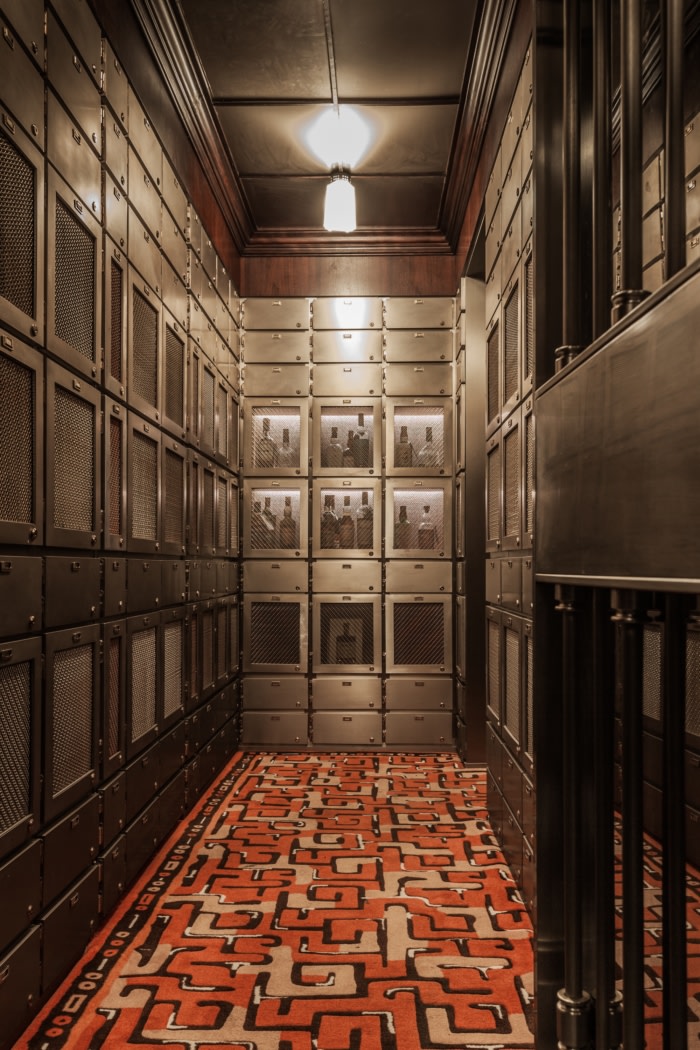



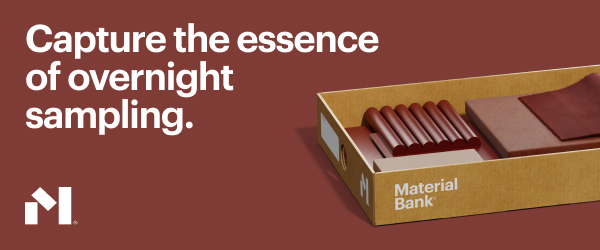


Now editing content for LinkedIn.